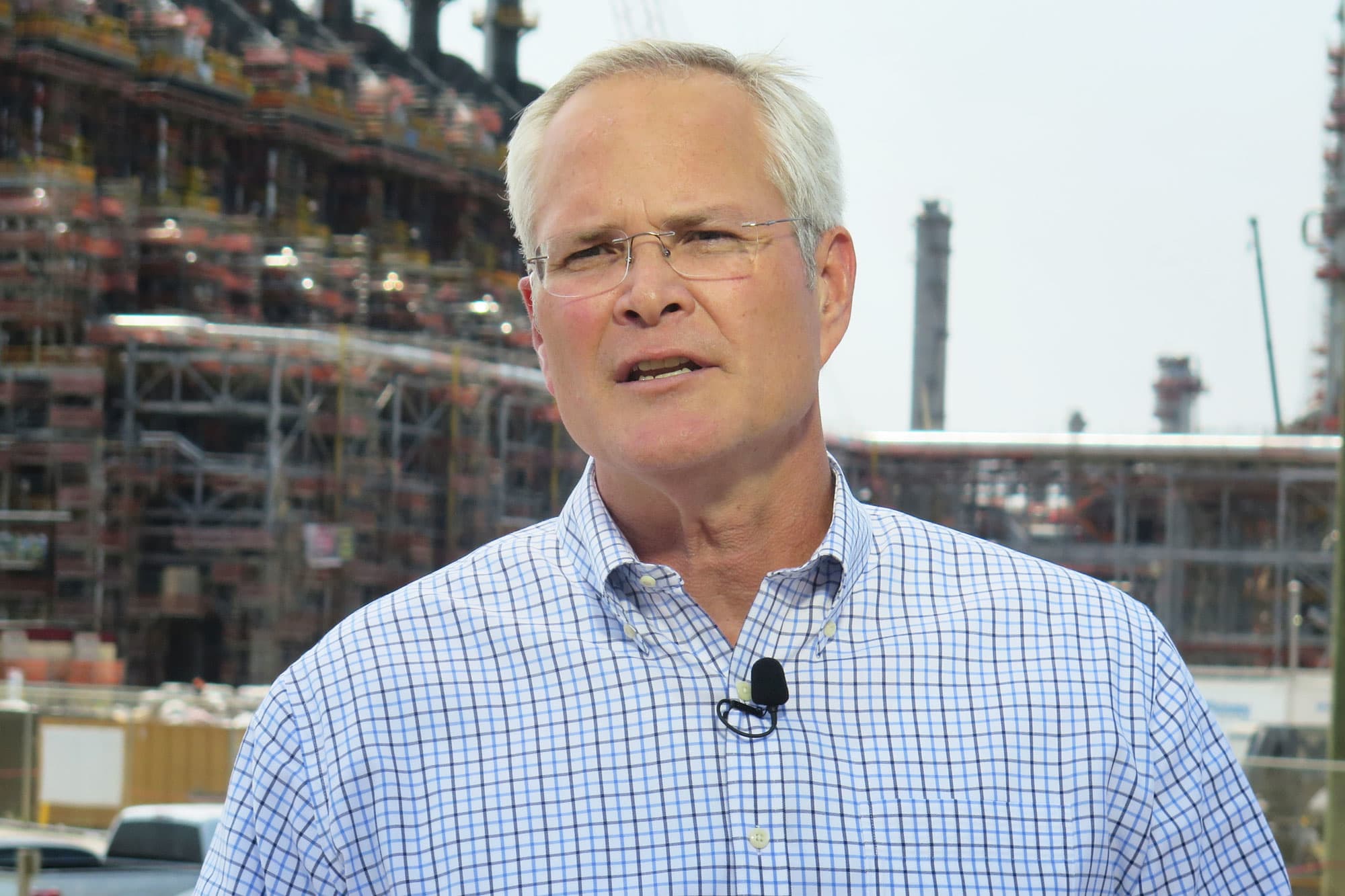Oil prices are at a 7-year high, but Exxon CEO Darren Woods says the ultimate trend is lower

Darren Woods, CEO, ExxonMobil
Michael Newberg | CNBC
Oil prices rose to a seven-year high Tuesday amid ongoing supply concerns and escalating tensions in the Middle East, but Exxon Mobil CEO Darren Woods said the ultimate trend for prices will be lower.
In the immediate future, however, the oil executive said the market should expect volatile prices as the industry’s recovery from Covid-19 continues.
“As you get supply and demand tighter, events that happen around the world … lead to a lot more volatility because there’s less of a buffer, and I think we’re going to see that for some time now,” he said Tuesday on CNBC’s “Squawk Box.” “Until industry begins to ramp up productions and increase the level of supply to meet this growing demand, or in turn demand starts to come down a little bit … you’re going to see a lot more volatility until we get better stability.”
Woods added that it’s hard to predict when the market might balance out given the many players involved.
West Texas Intermediate crude futures, the U.S. oil benchmark, traded as high as $85.74 per barrel on Tuesday, a price last seen in October 2014. The price marks a blistering recovery after the contract briefly traded in negative territory in April 2020, as the pandemic sapped demand for petroleum products.
International benchmark Brent crude broke above $88 per barrel, also hitting the highest level since 2014. As producers continue to keep a lid on production while demand recovers, some have called for oil to top $100 per barrel this year.
Loading chart…
But Woods said he doesn’t get “overly enamored” about high prices today. When looking at new investments the company focuses on ensuring operations can be competitive across a wide range of price environments.
“[W]e anticipated higher prices. We also anticipate a lot of volatility. And frankly we’re anticipating lower prices as we go forward,” he said.
Exxon said Tuesday it’s targeting net-zero greenhouse gas emissions for its operated assets by 2050. The announcement follows similar targets from competitors, and comes as Exxon faces board pressure to shift its operations. In 2021, upstart activist firm Engine No. 1 successfully placed three of its candidates on the oil giant’s board.
Exxon’s target does not include so-called Scope 3 emissions, which include the environmental footprint from the products a company generates, as well as the company’s supply chain. Scope 3 emissions are typically the highest, and the hardest, to quantify.
Tuesday’s pledge builds on prior announcements from Exxon around how it plans to cut its emissions. The company has also pledged billions of dollars to develop emissions-reducing technologies like carbon capture.
Woods said the target is “more than just a pledge” and that the company has a “line of sight” for how it plans to slash its emissions.
“We have roadmaps that we’re developing in each of our facilities around the world to deliver those reductions,” Woods said. “There are plans behind this ambition that takes us clearly through 2030 and then beyond that. I think that’s should give folks some confidence. This is more than just out there positioning on something this is actually work that we’re doing.”
The company said in a statement that it identified more than 150 potential steps and modifications that can cut emissions across its operations, including electrifying equipment and reducing emissions leaks.
Wood said that further down the line, technological advancements and market incentives will help drive down the cost of more expensive decarbonization efforts.
Exxon is the latest in a growing list of companies pledging to slash emissions. But critics note that at present there’s no enforcement mechanism, meaning some of these promises could potentially be without merit.
Shares of Exxon advanced more than 1% on Tuesday to their highest level in more than two years.




